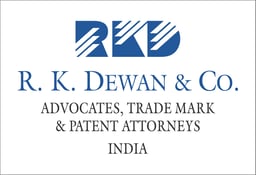News and developments
PCT Third Party Observations
World Intellectual Property Organization (WIPO) introduced Third Party Observations Service (TPOS) (under section 801(a), 804(b)) on April 13, 2017. This service allows third parties to make observations through the ePCT system (i.e., by accessing ePCT designated offices (DO) function) by citing prior art(s) which they believe to be relevant to the question of whether the invention claimed in the international application is novel and/or involves an inventive step.
Before the TPOS, the only people involved in the international phase of a PCT application were the applicant and the Offices (i.e., receiving office, International Bureau and International Searching and Preliminary Examining Authorities) for conducting various aspects of processing the application before entering the national phase. Third parties were getting some information during the processing of the application in the International Phase, but these parties had no opportunity to question the novelty and the inventive step of the PCT applications in the International Phase. The role of Third parties came into picture only after the application entered the National Phase in the respective countries. This changed on April 13, 2017 when the TPOS was introduced.
As per sections 801(b) (iii) and 801(b) (iv), a third party can only submit a single observation for an international application, and once submitted, it cannot be retracted or modified. There is also an upper limit of ten third party observations that can be filed to an international application, at the international phase.
It should be noted that only the observations and not the uploaded documents are made publicly available. Uploaded documents are only made available to the applicant, the competent International Authorities and designated Offices. If the observation is rejected by the International Bureau, the third party will be notified and provided with a reason. An Observation made by a third party shall:
Any purported observation by a third party which, in the view of the International Bureau, appears not to be in compliance with aforementioned points, shall not be treated as a third party observation. The International Bureau shall inform the third party accordingly, unless the purported observation appears to be a clear attempt at abuse of the system. The purported observation shall not be open to public inspection and shall not be communicated to the applicant, by any International Authority or any designated Office.
The applicant will be notified about the first published observation, and all subsequent observations will be promptly notified after the expiration of 28 months from the priority date. The applicant may comment on the third party observations until the expiration of 30 months from the priority date. These comments must be submitted through ePCT or by sending a letter to the International Bureau. The comments of the applicant are published for public inspection.
Once received, the observations will be transmitted to a competent International Searching Authority, and/or International Preliminary Examining Authority involved in the processing of the application during the international phase. If the International Bureau has not yet received the international search report, supplementary international search report or international preliminary report on patentability respectively. To the extent that the observations are received by those Authorities in time to be taken into account in drawing up their respective reports, any prior art referred in the observations should be considered, provided that either a copy of the prior art is included, or it is otherwise immediately
available to the examiner. The observations will also be transmitted to the designated Offices promptly after the expiration of 30 months from the priority date. The designated Offices are, however, not obliged to take them into account during national processing.
There are certain situations in which you cannot or should not make a third party observation:
There are certain advantages related to third party observations: they are applicable worldwide, i.e., the designated offices can refer to the observations made on any international application. Submission of third party observations and the submission of comments by the applicant are free of cost.
